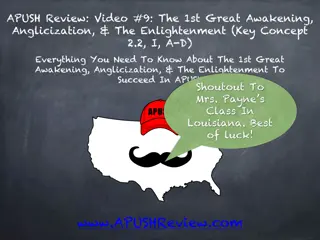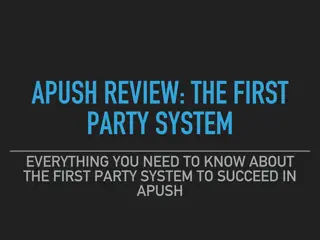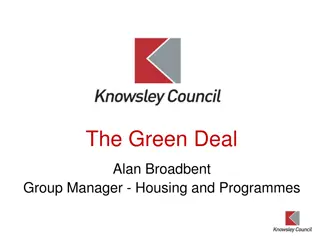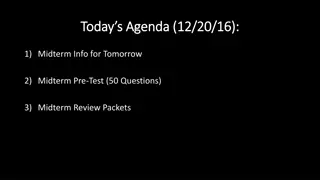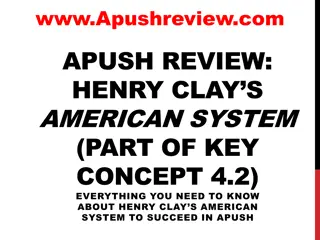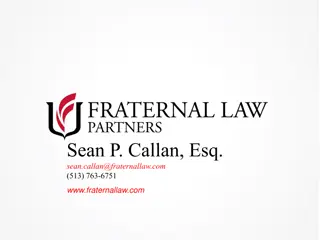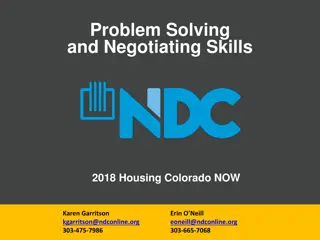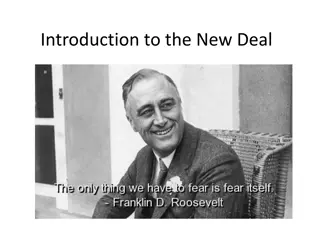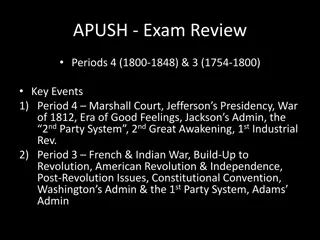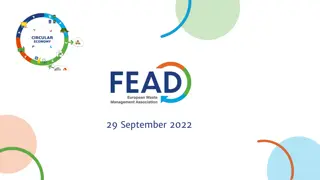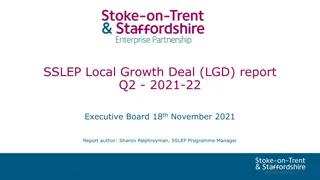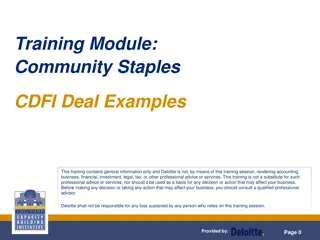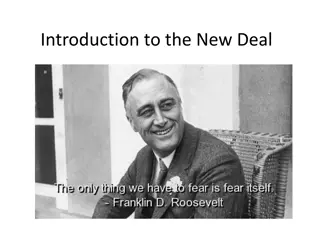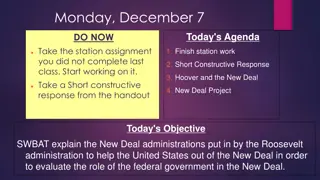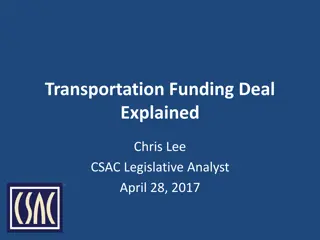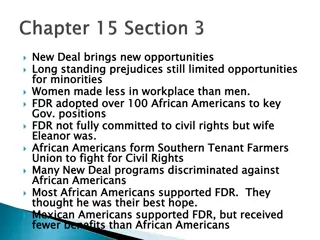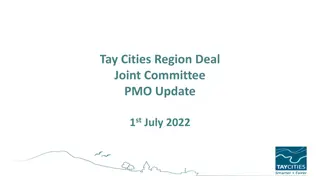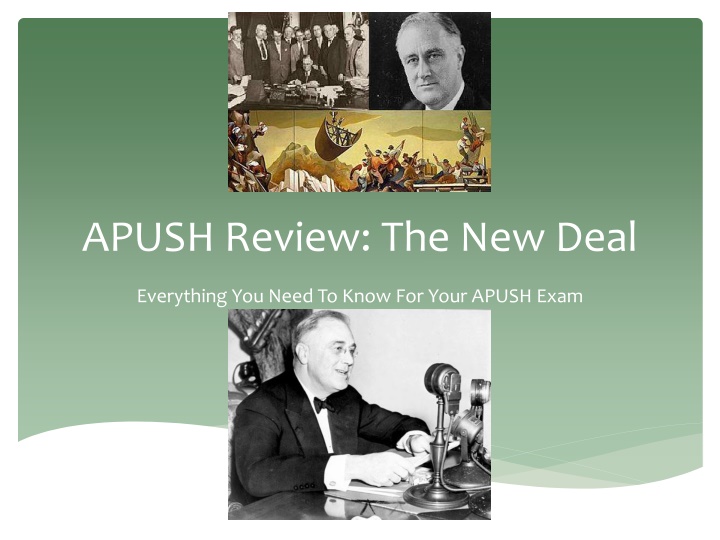
The New Deal: Key Programs and Impact on the Economy
Explore the essential aspects of FDR's New Deal including the Banking Problem, FDR's 3 Rs, Relief, Recovery, Reform, the Two New Deals, and the various programs implemented to combat the Great Depression. Learn about key initiatives like the Public Works Administration, Civilian Conservation Corps, Tennessee Valley Authority, Social Security, and more. Delve into the impact these programs had on the economy and society during a critical period of American history.
Download Presentation

Please find below an Image/Link to download the presentation.
The content on the website is provided AS IS for your information and personal use only. It may not be sold, licensed, or shared on other websites without obtaining consent from the author. If you encounter any issues during the download, it is possible that the publisher has removed the file from their server.
You are allowed to download the files provided on this website for personal or commercial use, subject to the condition that they are used lawfully. All files are the property of their respective owners.
The content on the website is provided AS IS for your information and personal use only. It may not be sold, licensed, or shared on other websites without obtaining consent from the author.
E N D
Presentation Transcript
APUSH Review: The New Deal Everything You Need To Know For Your APUSH Exam
The Banking Problem. Roughly banks failed prior to FDR becoming President Bank Holiday: Closed banks for several days Emergency Banking Relief Act (March, 1933): Allowed President to reopen good banks, monitor transactions Fireside Chats Radio addresses Helped restore public faith in banks
FDRs 3 Rs Relief: Providing jobs, help end suffering Recovery: Help improve the economy Reform: Change the economy Prevent another depression from occurring Permanently change the economy
Two New Deals 1stNew Deal (1933 1935) Focused primarily on Relief and Recovery 2ndNew Deal (1935 1938) Focused primarily on Reform Changing the role of government
Programs That Put People to Work (Relief) PWA: Public Works Administration Provided $4 billion to state govt s to build schools, roads, improving highways, etc. CCC: Civilian Conservation Corps Put young men (18 24) to work Workers sent a portion of income back to families Environmental work: planting trees, building parks, etc. TVA: Tennessee Valley Authority Goal: reform utility power in Tennessee Building of dams helped provide jobs and hydroelectric power WPA: Works Progress Administration Employed 9 million workers Built roads, bridges, building, etc. Employed 40% of nation s employees
Recovery Programs AAA: Agricultural Adjustment Act Sought to remedy overproduction of crops Paid farmers NOT to grow crops Supreme Court overturned it in Butler v. US NIRA: National Industrial Recovery Act Allowed president to set codes for industries (prices, working hours, etc.) Section 7a allowed unions to collectively bargain Declared unconstitutional in Schechter Poultry v. US
Reform Programs Social Security: Provided unemployment insurance Pensions for retired workers Wagner Act: HUGE boost for unions Allowed unions to collectively bargain Inspired CIO led by John L. Lewis sit down strike FDIC: Guaranteed bank deposits up to $5,000 Restored faith in banks SEC: Sought to protect stock market from fraud
Court Packing Plan FDR sought to influence the Supreme Court His plan? For every judge over 70 that does not retire, he could appoint a new one This would allow him to appoint up to six new judges This NEVER happened due to public (and government) outcry Fear of FDR being a dictator
Key People from the 1930s Huey Long: Proposed to provide $5,000 to every family by taxing wealthy Dr. Francis Townsend: Favored giving $200 per month to senior citizens Father Charles Coughlin: New Deal supporter turned critic Believed FDR should have nationalized banks John Maynard Keynes: Economist that influenced FDR Government should run a deficit to improve economy
Was the New Deal Good or Bad? Good: Restored faith and optimism Provided millions of jobs Programs still exist today (Social Security, FDIC, etc.) Bad: Increased power to the federal government High unemployment persisted WWII helped end the depression
Thanks for watching! Subscribe to my channel Help spread the word Good luck on your tests!


